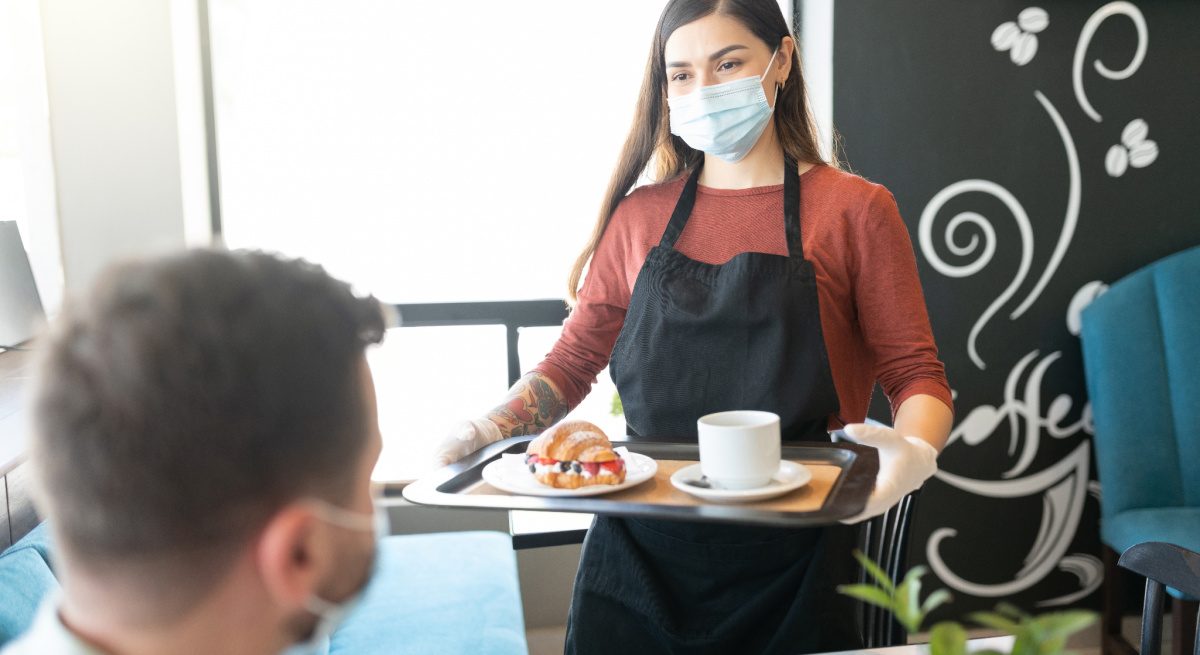Creative Destruction in the Restaurant: Eight Things COVID-19 Changed Forever
3 Min Read By Tom Riccio
Necessity is the mother of invention, and COVID-19 has been the greatest single driver of necessity the restaurant industry has ever seen. Few industries were hit as hard – and few have been as inventive in their solutions. According to Statista, between March and October 2020 the food services industry lost $130 billion in sales compared to the previous year. Those that survived did so because they implemented massive changes, quickly.
But enough has been written about the industry’s woes. As COVID-19 cases begin to decline and more people are talking about a return to normalcy, it’s worth a minute to reflect on what has changed for good.
Here is my list of eight things COVID-19 may have changed forever, from abandoned processes to others headed toward extinction – and emerging ones we’re just now seeing. (Admittedly, the final chapter of the pandemic hasn’t been written, so this list comes with an asterisk: The past year has reminded us that unpredictability is a certainty and old consumer habits die hard.)
Say goodbye to these pre-COVID restaurant mainstays:
- The landline. In a world that moves at the speed of smartphone clicks, calling a restaurant to place an order suddenly feels antiquated (even if many of us still do it). The pandemic accelerated digital adoption at restaurants at the same time consumers were starting to use their smartphones in ways they hadn’t before. Recently, a major fast casual chain disclosed to a friend that they don’t even answer the phone when their kitchen gets backed up; in-person and online orders take precedence. The landline may linger for a while, but its days are numbered. (If the minimum wage goes up, it could drive the move to online-only ordering even faster.)
- The “You can wait at the bar” line. Sliding up to the bar while waiting for a table may have peaked. Some people will still feel comfortable sitting shoulder-to-shoulder with strangers to order a pre-dinner drink, but many restaurant patrons will expect an alternative – like waiting in their cars until a table is ready. Expect more restaurants to ask customers to come inside only when their table is ready.
- Dirty restaurants. Most of us have been to a restaurant that seemed slightly unsanitary, especially hole-in-the-wall establishments where the food is good, despite bathrooms that haven’t been cleaned in days. In a world where business flows toward restaurants that take health and safety seriously, expect serious headwinds for dodgy establishments. The industry was already hurting; these may not fare well.
- Cash. The hand sanitizer dispensers on the counters of every restaurant are a constant reminder that touch represents risk. When cash changes hands, germs do, too. Digital transactions can provide a touchless experience, plus other benefits.
Look for these COVID-19 trends to continue:
- To-go cocktails. Lockdowns prompted many local municipalities to rethink longstanding ordinances around how alcohol can be served. Don’t expect them to start backtracking now. Thanks to the relaxed rules, carryout cups and to-go cocktails are a new staple item on menus. According to the National Restaurant Association, 35 percent of off-premises customers are more likely to choose a restaurant if it offers alcoholic beverages with a to-go order.
- Digital first presence. In the past, websites were often an afterthought for restaurants (if they had one at all). All that has changed. Now, the online ordering process is just as critical as is being able to make reservations via an online source. The omnichannel experience was talked about as an aspirational goal by restaurants for years, but now it’s a necessity.
- Germ conscious consumers. Even if COVID-19 disappears, we’ve all become accustomed to living healthier and avoiding sickness. Health and safety have always been a concern, but the pandemic has brought them to the forefront of the restaurant patron’s mind. Now it’s not just the sneezing server that raises eyebrows; it’s the maskless chef or lack of signage directing people to social distance. Health and safety will be a defining part of the customer experience for the foreseeable future.
- Smartphone-optimized dining experience. Checking in via smartphone is the perfect solution for restaurants operating at reduced capacity, providing patrons with the option to walk straight from their car to an open table. But that may just be the tip of the iceberg. From ordering via smartphone from within a restaurant to scanning a QR code to pay for a meal, there are a myriad of ways restaurants will explore further building on increased smartphone savvy among consumers.
The restaurant industry has demonstrated amazing resilience over the last year, and owners will want to continue building establishments that are resistant to systemic shocks like COVID-19.


